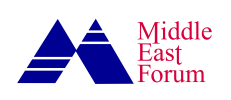After seven years of procrastination, and under the pressure of an avalanche of reinstated United Nations sanctions, Iran finally ratified the Combating the Financing of Terrorism (CFT) convention on October 1, 2025. But the ratification came with “conditions,” a caveat that does little to end Tehran’s international financial isolation. The Guardian Council—a constitutional watchdog—declared that the laws of the Islamic Republic supersede the provisions of the convention, turning ratification into lip service rather than a commitment of adherence.
The Iranian currency offered the clearest evidence of how little the move meant. The battered rial, already at record lows, showed no improvement. Traders in Iran’s markets ignored the news, dismissing it as irrelevant. What truly matters to them are the decisions by European countries, Canada, the United States, and others to reinstate United Nations sanctions after they triggered the so-called “snapback mechanism” in late August—a provision in the 2015 Joint Comprehensive Plan of Action nuclear deal that allows signatories to reimpose all suspended sanctions if Iran is in breach.
The Guardian Council—a constitutional watchdog—declared that the laws of the Islamic Republic supersede the provisions of the convention, turning ratification into lip service.
The United Nations General Assembly approved the International Convention for the Suppression of the Financing of Terrorism in 1999. By 2007, the Financial Action Task Force, an inter-state watchdog, demanded that Iran adopt the Combating the Financing of Terrorism convention and other international standards against money laundering or face punitive designations that would cut it off from global banking. Most major banks heed Financial Action Task Force recommendations and impose restrictions on countries with poor compliance ratings.
In 2009, the Financial Action Task Force instructed its members and all jurisdictions to apply countermeasures against Iran, effectively blacklisting the country. Iranian companies and individuals suddenly faced hurdles opening bank accounts worldwide. After the 2015 nuclear deal, the Financial Action Task Force suspended those countermeasures to encourage Iran to align its financial laws with international conventions.
In 2018, the Iranian parliament passed a package of bills to bring the country closer to Financial Action Task Force standards, including the Combating the Financing of Terrorism convention. But the Guardian Council, which vets all legislation, rejected two of the bills. Hardliners dominating the Council and other constitutional bodies argued that compliance with Financial Action Task Force rules would prevent Tehran from funding the “Resistance Front,” its network of armed proxies across the region. By 2020, the Financial Action Task Force had blacklisted Iran again, concluding that the regime had simply stalled and resisted reforms.
Observers emphasize that “conditional” acceptance of the Combating the Financing of Terrorism convention will not satisfy international watchdogs. Iran must align its laws with global standards, not override them. “This creates a major loophole, since Iran’s domestic framework explicitly exempts what it defines as ‘support for resistance groups.’ ... FATF had previously warned Tehran about this,” Saeed Ghasseminejad, a U.S.-based Iranian economist, explained.
The economic costs have been staggering. In 2007, when the Financial Action Task Force began pressuring Iran and the nuclear issue was heating up, the rial traded just under 10,000 to the dollar. Eighteen years later, it stands at 1.16 million—a 120-fold depreciation that has impoverished tens of millions of Iranians and all but wiped out the middle class. Average monthly wages hover around $120, roughly one-quarter of the minimum cost of living.
Many Iranians discussing the Combating the Financing of Terrorism convention ratification on social media noted that the government dragged its feet for seven years until Western powers and Israel intensified military and sanctions pressure.
Most Iranians place the blame squarely on 86-year-old Supreme Leader Ali Khamenei for steering the country into economic ruin.
Iranian President Masoud Pezeshkian, who attended the United Nations General Assembly in New York in September 2025, failed to secure any meaningful meetings with U.S. or European officials to break the deadlock. On October 2, the government spokesperson complained in Tehran that U.S. officials had rejected Iran’s request for talks. Critics quickly pointed out the irony: For years, when Washington called for direct negotiations, the Islamic Republic refused. Now the United States has adopted a “take it or leave it” stance and has no interest in endless discussions.
Most Iranians place the blame squarely on 86-year-old Supreme Leader Ali Khamenei for steering the country into economic ruin. One user on X noted that while Iranians over 70 cannot obtain a driver’s license, take out loans, or even act as loan guarantors, the country remains under the rule of clerics approaching 90. Only one thing is certain: Life in Iran is going to become much more difficult as Iranians lose access to basic banking functions that once provided a small but important mechanism to keep their heads above water.






